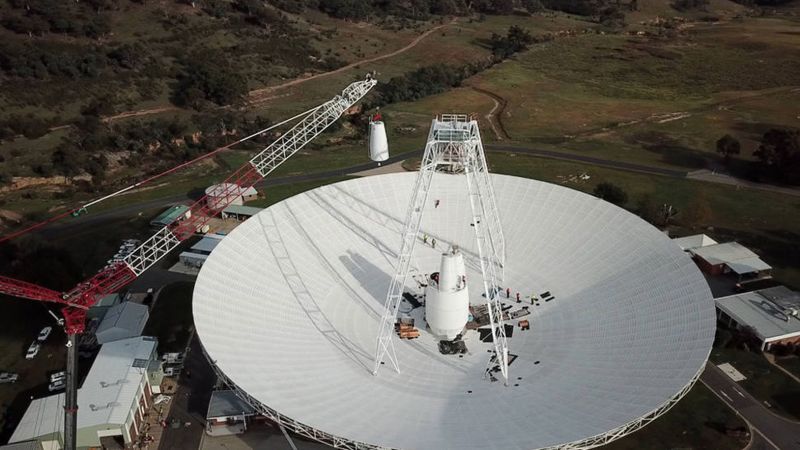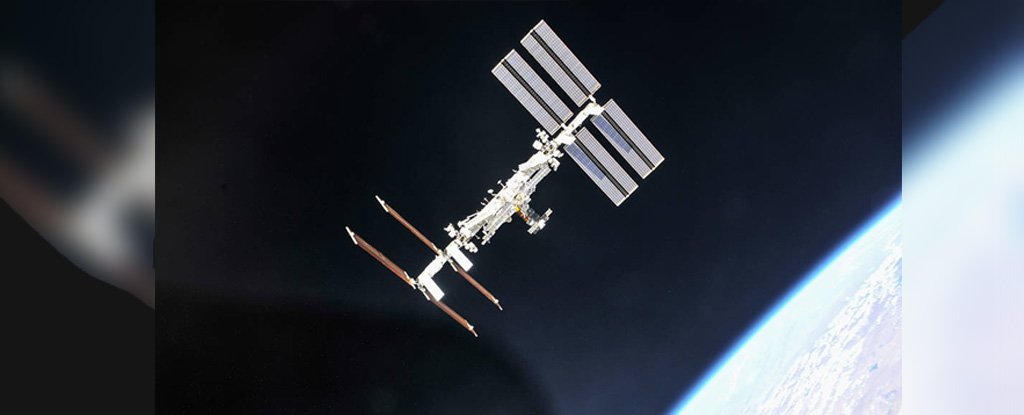The Astronomy Thread
- Thread starter Araxen
- Start date
You are using an out of date browser. It may not display this or other websites correctly.
You should upgrade or use an alternative browser.
You should upgrade or use an alternative browser.
- 8,549
- 10,824
Investors are starting to pour out money whenever SpaceX does a funding round, because it is starting to look like they have a potential second major product (beyond, you know, cheap launches).Space x is funding starlink on their own.
So charges make sense because they're after every penny they can get now in order to pay for the rest of starlinks deployment.
Cybsled
Naxxramas 1.0 Raider
- 18,222
- 14,740
The most exciting thing for investors is Starlink would have virtually no competition in the satellite high speed internet space for the foreseeable future. You'd basically be able to tap previous markets that had no option for high speed (rural), enhanced travel options (planes and ships immediately come to mind), and depending on price, you could potentially tap the less rural markets (although long term this would probably drive a pricing war - great for the consumer, but less so for profit margins).
- 1
Aychamo BanBan
<Banned>
- 6,338
- 7,157
The most exciting thing for investors is Starlink would have virtually no competition in the satellite high speed internet space for the foreseeable future. You'd basically be able to tap previous markets that had no option for high speed (rural), enhanced travel options (planes and ships immediately come to mind), and depending on price, you could potentially tap the less rural markets (although long term this would probably drive a pricing war - great for the consumer, but less so for profit margins).
So, how does it work?
If you're on Starlink and I'm on AT&T. Like how does a packet get from me to you?
Captain Suave
Caesar si viveret, ad remum dareris.
- 5,926
- 10,165
If you're on Starlink and I'm on AT&T. Like how does a packet get from me to you?
Like any other satellite internet. You > AT&T>> Internet at large >> SpaceX/Starlink ISP division > Starlink ground station > Starlink satellite network > my antenna > my PC. Reverse, repeat.
- 1
- 8,549
- 10,824
Also, the Starlink satellite constellation acts as a kind of Internet itself.Like any other satellite internet. You > AT&T>> Internet at large >> SpaceX/Starlink ISP division > Starlink ground station > Starlink satellite network > my antenna > my PC. Reverse, repeat.
Classic satellite internet is Ground Station->Satellite->You, which requires a high altitude satellite which can see both the ground station and you, which gives you high latency (round trip to GEO at 36000 km altitude means a minimum of 250ms ping) and a powerful antenna (to reach the distance).
In Starlink's case (or the other attempt at competitors, like OneWeb), the satellite are in low orbit, so you
1) Have a lower ping to the satellite and require a less powerful antenna for a higher bandwidth
2) Have each satellite communicate to each other nearby, which means it routes your datapackets to the satellite nearest to "your" ground station rather than trying to see the ground station directly
3) But also requires you to switch satellites regularly as they rotate in and out of your zone of reception
The latter is why Starlink is only now becoming functional after so many launches. They finally have enough satellites in orbit that some areas on Earth have at least one in view nearly 24/24, which is why they warn that you may experience loss of connectivity: there are still gaps where you no longer have a satellite in view for a few minutes. Each additional set of satellites increase coverage density.
- 2
Burns
Avatar of War Slayer
Also, the Starlink satellite constellation acts as a kind of Internet itself.
Classic satellite internet is Ground Station->Satellite->You, which requires a high altitude satellite which can see both the ground station and you, which gives you high latency (round trip to GEO at 36000 km altitude means a minimum of 250ms ping) and a powerful antenna (to reach the distance).
In Starlink's case (or the other attempt at competitors, like OneWeb), the satellite are in low orbit, so you
1) Have a lower ping to the satellite and require a less powerful antenna for a higher bandwidth
2) Have each satellite communicate to each other nearby, which means it routes your datapackets to the satellite nearest to "your" ground station rather than trying to see the ground station directly
3) But also requires you to switch satellites regularly as they rotate in and out of your zone of reception
The latter is why Starlink is only now becoming functional after so many launches. They finally have enough satellites in orbit that some areas on Earth have at least one in view nearly 24/24, which is why they warn that you may experience loss of connectivity: there are still gaps where you no longer have a satellite in view for a few minutes. Each additional set of satellites increase coverage density.
Nice, that saved me some time. I was wondering about the lag, so, I was in the midst of looking up all the old sats (Huges Net) and new sats (Starlink) to see about latency, as you posted that.
To add a little bit to what Starlink/SpaceX is planing:
There are currently 895 satellites in orbit with an objective of 12,000 satellites for this phase, if the business is successful it may expand to 42,000.
They will have 3 different orbital shells/arrays, each with different altitudes.
Shell 1: 1,440 satellites at 550 km (340 mi)
Shell 2: 2,825 Ku-band and Ka-band spectrum satellites at 1,110 km (690 mi)
Shell 3: 7,500 V-band satellites at 340 km (210 mi)
Also, you can look on Stellarium and see Starlink sats wizzing past, every now and then.
Last edited:
- 1
- 8,549
- 10,824
Some data on the beta vs their competition:

 www.pcmag.com
www.pcmag.com

Tested: SpaceX's Starlink Satellite Internet Service Is Fast, But It'll Cost You
Elon Musk's Starlink satellite internet project is faster than its retail competitors, according to data from Ookla Speedtest Intelligence. But then again, nobody is really using it yet.
Captain Suave
Caesar si viveret, ad remum dareris.
- 5,926
- 10,165
My dad in the FL panhandle has HughesNet. It's utter dogshit. If Starlink can even provide a stable connection it's worth double the price.
- 1

- 1
Captain Suave
Caesar si viveret, ad remum dareris.
- 5,926
- 10,165
better than the 500-600+ stuff with those other carriers
That's just the advertised latency, too. In practice my dad gets 1500-3500ms. It makes even skype calls difficult. He and I are business partners; it drives me fucking bananas.
- 1

Burns
Avatar of War Slayer
That's just the advertised latency, too. In practice my dad gets 1500-3500ms. It makes even skype calls difficult. He and I are business partners; it drives me fucking bananas.
I imagine yall have looked around for options at some point, but microwave internet seems to be growing at a steady clip in the rural areas. Have you recently checked for "fixed wireless" ISPs in the area?
A quick search gave me Rise Broadband as the largest fixed ISP in the US, but they aren't in Florida yet. There are a bunch of other small ones though and it looks like even AT&T has a 25/1 Mbps fixed internet option in some areas (cant tell where w/o zip codes).
Brahma
Obi-Bro Kenobi-X
You want V'ger. This is how we get V'ger!

 www.cnn.com
www.cnn.com

After an antenna repair on Earth, NASA is now able to command Voyager 2 again | CNN
NASA started repairs in March on the only antenna that can command the Voyager 2 spacecraft. Mission operators are now back in touch, and the four-decade-old probe is responding to their directions.
- 3
- 2

Borzak
<Bronze Donator>
- 27,590
- 37,195

How To Track SpaceX’s Starlink Satellites In The Sky
See the SpaceX Starlink satellite 'train' in the night sky in July 2020. Learn here all you need to know about Starlink satellites.
Podcast I was listening to mentioned that 3% of the satellites have failed already.
Starlink success is crucial to my bug out plan for wife and I to move to Rocky mountains. Reliable internet opens up many more properties that we might not otherwise look at. Excited to see real world results people are getting.
On another side, thought this was interesting but still disappointing that we are this far in and we still don't really have concrete forward moving plans for a station other than conceptual ideas. We can do so much better than what we have now.

 www.sciencealert.com
www.sciencealert.com
On another side, thought this was interesting but still disappointing that we are this far in and we still don't really have concrete forward moving plans for a station other than conceptual ideas. We can do so much better than what we have now.

After 20 Years in Orbit, ISS Is Approaching Retirement. Here's What Might Replace It
On Monday, the world celebrated 20 years of continuous human presence in space.
- 8,549
- 10,824
It's mostly like all hardware. It will either fail fast, or fail late - rarely in the middle. Given that the idea is to make lotsa cheap satellites, if you have a failure rate of 1 or 2 per launch of 60, you're good.
How To Track SpaceX’s Starlink Satellites In The Sky
See the SpaceX Starlink satellite 'train' in the night sky in July 2020. Learn here all you need to know about Starlink satellites.starwalk.space
Podcast I was listening to mentioned that 3% of the satellites have failed already.
Most of the first batch has already been de-orbited, but I assume that's what not they meant. The first launch were tests, and most of those are the highly reflective versions that annoy all astronomes.
Share:










